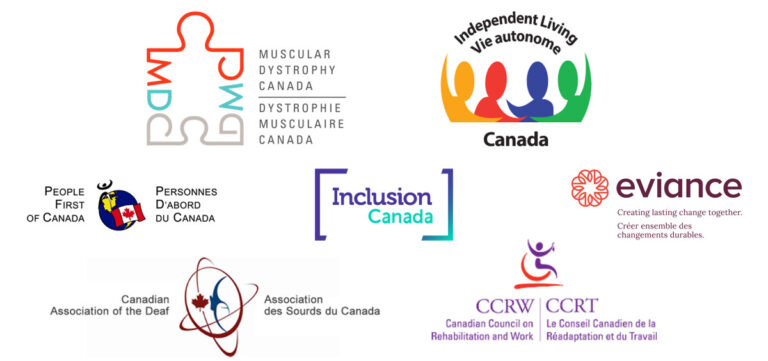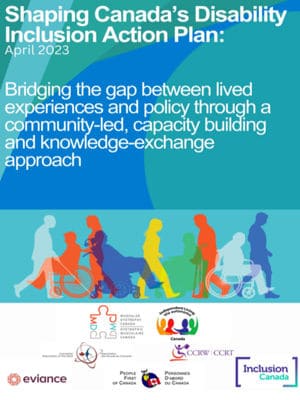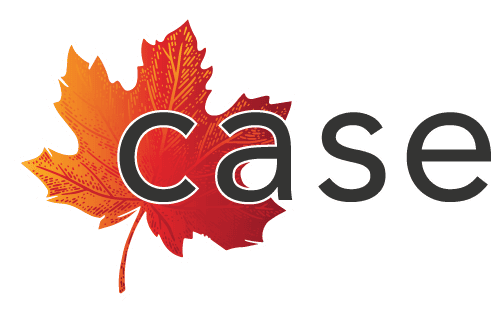Report on Input into the Federal Disability Inclusion Action Plan
In 2020, the Government of Canada committed to creating a new Disability Inclusion Action Plan (DIAP). The goal of the DIAP is to improve the lives of the more than six million persons who experience disability in Canada.
The Action Plan will cover four pillars:
- financial security by reducing poverty with a Canada Disability Benefit,
- employment by creating a national employment strategy,
- disability inclusive spaces to remove barriers to public spaces, and
- a new definition for disability and making it easier to access programs.
“Nothing Without Us”
Muscular Dystrophy Canada and Independent Living Canada gathered input to inform the plan. They sought feedback from a broad range of Canadians who experience disability. Input was obtained from persons experiencing visible and non-visible disability, especially persons living “at the margins of the margins,” such as the unhoused, new immigrants and refugees.
The organizations involved included the following:

What They Learned
The French version of the report can be accessed at this link. | La version française du rapport est accessible sur ce lien.
A few of the challenges mentioned by persons experiencing disability are provided below. Refer to the report to read their recommended solutions.
Financial Security
- Living with a disability in Canada can be financially challenging, leading to poverty, social and physical isolation, and compromising one’s dignity, choice and freedom.
- Persons experiencing intersections of identity (race, gender, Indigeneity, class, immigration status, family status and language) faced interpersonal, institutional and systemic discrimination that affected access to programs and services.
Employment
- Current labour shortages have resulted in employers not providing as much training for new workers.
- The pandemic accelerated trends towards part-time and temporary work, the gig economy, delivery jobs and work from home.
Inclusive Spaces
- While physical challenges are often faced by persons who experience disability, barriers can also include communications, processes and policies, virtual spaces and technology, systemic issues and people’s attitudes.
Modernizing Approaches to Defining Disability
- When redefining disability, people who experience disability—any kind of disability—must be treated as equals and with dignity and respect.
- The process of assessing disability should be designed to focus on what people can do or could do with the right supports.

The authors of the report emphasize that the Disability Inclusion Action Plan must be designed from an intersectional lens and from meaningful and constant connection with persons who experience disability and community partners.

